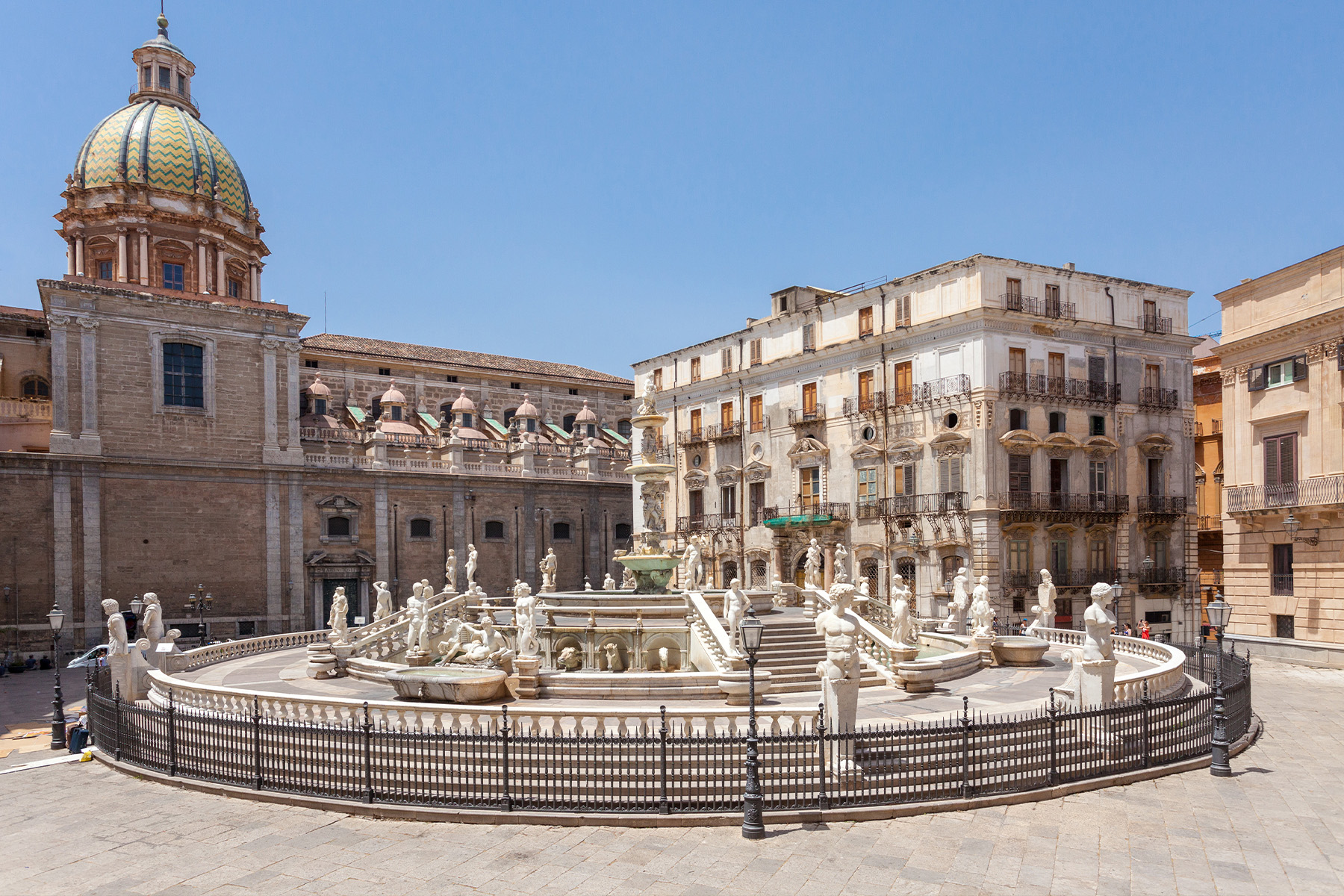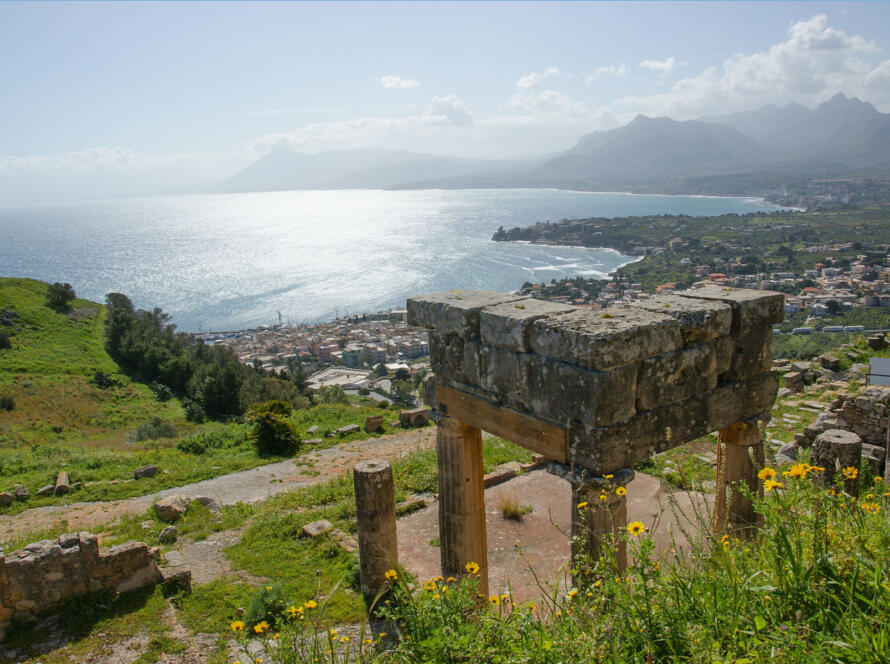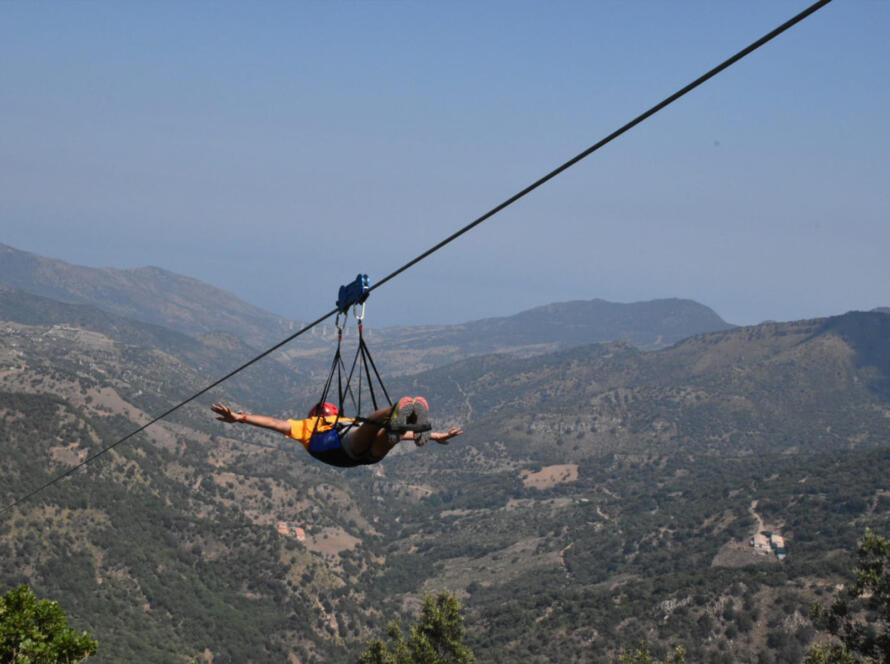Begin our tour to discover the most evocative places in Palermo, among streets and monuments that have marked the city’s history and made it the cradle of a rich, multi-ethnic culture. A city full of beauty that never ends to amaze, leaving everyboyd open-mouthed.
The tour begins at Piazza Stazione (the central station’s square), also known as Piazza Giulio Cesare: just look up to the imposing building and get captured by the elegant mix of neoclassical style with traces of the Art Nouveau period. In the centre of the square stands out the statue, made in honour of Vittorio Emanuele. Right on the opposite side of the square, you will easily recognize the wide entrance to Via Roma, one of the city’s main streets. If you look on your left, the street you see is Via Maqueda, an historical main street that heads to Piazza Verdi where stands Massimo theather.
During the tour, we suggest you to take a nice walk along Via Maqueda and venture some of the city’s most recognizable places. Via Maqueda represents the multi-ethnic center of the city; it also includes several places of interest for tourists coming to the city, such as the Ballarò market, Piazza Pretoria and Piazza Verdi.
Dive into the uniqueness of this neighbordhood, were people coming from Africa, Sri Lanka and Bangladesh have contributed to the cultural richness of the urban landscape, characterized by typical family-run shops, small businesses and religious sites such as the mosque located on Via Giosafat.
You will find that Via Maqueda intersects Via Vittorio Emanuele, forming a beautiful octagonal square, called I Quatto Canti. Another square that overlooks the street is Piazza Pretoria also called Piazza della Vergogna (the Square of Shame), a symbol of the Tuscan Renaissance and one of the most beautiful squares in Italy. The concentric rings that make up the fountain are divided by pools of water with steps that act as bridges and marble parapets, while in the centre rises a stem of three basins one above the other. The square, magical and majestic in its wonder, is filled with historic buildings and Palermo folklore.
The next stop on the tour, continuing along Via Bellini, is the Church Santa Caterina d’Alessandria, which has always been a focal point for the city’s religious life and one of the highest expressions of Baroque period in the city. Initially a place to host repentant sinners, in the 16th century it became a regular monastery for high society maidens. The church underwent significant changes in its architecture following the directions of the nuns who inhabit the convent, who desidered for a more opulent and Baroquesque reconstruction. The church features a typical Latin cross plan with six chapels on either side of the naves. The complicated and fitted decorative work fully expresses the idea of horror vacui (quite literally ‘fear of empty spaces’) typical of the Baroque style, with the skillful use of different marbles in multicoloured patterns.
To be following in our Baroque tour is the Chiesa del Gesù, also called by the local inhabitants Casa Professa, located at the end of the Ballarò market and belonging to the Jesuits religious order. This is one of the city’s most iconic attractions, you will be enraptured as you admire the beauty of its interior, all decorated in a lavish and flamboyant manner typical of Sicilian Baroque, in contrast to the austere façade. A Latin cross plan with three naves characterises the church, entirely decorated from top to bottom. A true jewel of the Baroque period of inestimable value.
Come lunchtime, we cannot fail to stop at one of the city’s most characteristic markets: the Ballarò Market, a riot of energy, colour and tradition. Here you will encounter many stalls and shops selling all kinds of foodstuffs: fish, meat, fruit, cheese, spices and more. You will be captivated by the shouts of the merchants inviting passers-by to approach their stalls, the so-called abbanniare in Sicilian. You will not be disappointed at all by this gem, and you will come out of there amply satiated.
After the lunch break, the tour to discover the multiethnicity of Palermo continues with a visit to the Jewish quarter of Harat al Yahud, a district that witnessed Jewish culture from the 6th century until 1492. The quarter offers a view of what Jewish life was like at the time and contains the Municipal Historical Archives as well as the Church of St Nicholas of Tolentino, which was built on the remains of the ancient synagogue. The quarter is divided into two districts, La Meschita and La Guzzetta, and the cemetery was located outside the Porta di Termini, where Corso dei Mille stands today.
The penultimate stop of the tour is the Church of San Giovanni degli Eremiti, a jewel of the city’s Muslim artistic and cultural heritage. During Arab rule, an Arab mosque probably stood here, but over the centuries it never lost its religious function, also becoming a church and convent during the Norman period. The church is famous for its roofs characterised by small red domes that make it stand tall in the Palermo sky, overlooking Via Maqueda and making it iconic. An essential stop in the discovery of Palermo’s multi-ethnic history.
The tour ends at Piazza Indipendenza, one of the city’s main squares from which you can admire Porta Nuova, the Palatine Chapel and the Royal Palace. The square also features a lush green garden where the obelisk in honour of the Martyrs of Italian Independence stands.




